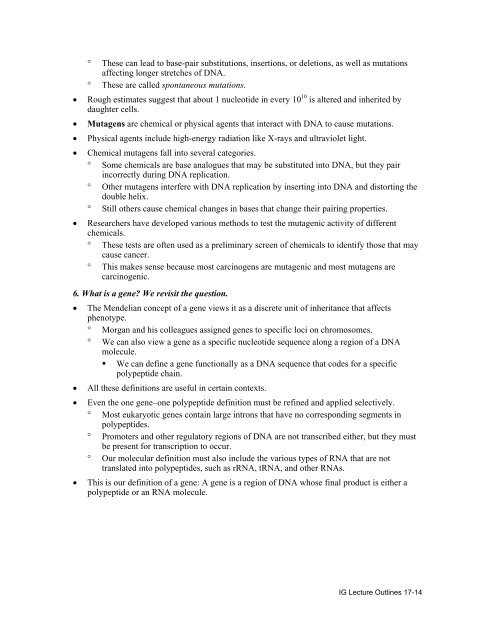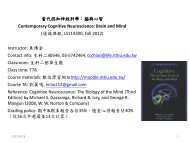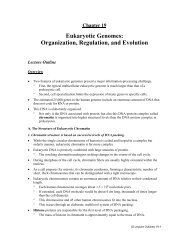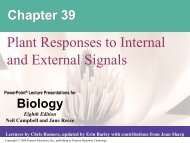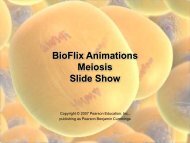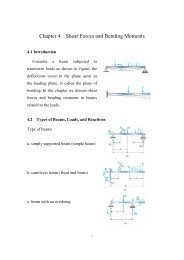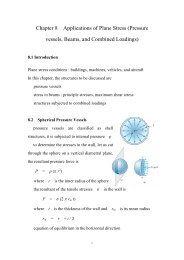CHAPTER 17 FROM GENE TO PROTEIN
CHAPTER 17 FROM GENE TO PROTEIN
CHAPTER 17 FROM GENE TO PROTEIN
- No tags were found...
You also want an ePaper? Increase the reach of your titles
YUMPU automatically turns print PDFs into web optimized ePapers that Google loves.
° These can lead to base-pair substitutions, insertions, or deletions, as well as mutationsaffecting longer stretches of DNA.° These are called spontaneous mutations.• Rough estimates suggest that about 1 nucleotide in every 10 10 is altered and inherited bydaughter cells.• Mutagens are chemical or physical agents that interact with DNA to cause mutations.• Physical agents include high-energy radiation like X-rays and ultraviolet light.• Chemical mutagens fall into several categories.° Some chemicals are base analogues that may be substituted into DNA, but they pairincorrectly during DNA replication.° Other mutagens interfere with DNA replication by inserting into DNA and distorting thedouble helix.° Still others cause chemical changes in bases that change their pairing properties.• Researchers have developed various methods to test the mutagenic activity of differentchemicals.° These tests are often used as a preliminary screen of chemicals to identify those that maycause cancer.° This makes sense because most carcinogens are mutagenic and most mutagens arecarcinogenic.6. What is a gene? We revisit the question.• The Mendelian concept of a gene views it as a discrete unit of inheritance that affectsphenotype.° Morgan and his colleagues assigned genes to specific loci on chromosomes.° We can also view a gene as a specific nucleotide sequence along a region of a DNAmolecule.• We can define a gene functionally as a DNA sequence that codes for a specificpolypeptide chain.• All these definitions are useful in certain contexts.• Even the one gene–one polypeptide definition must be refined and applied selectively.° Most eukaryotic genes contain large introns that have no corresponding segments inpolypeptides.° Promoters and other regulatory regions of DNA are not transcribed either, but they mustbe present for transcription to occur.° Our molecular definition must also include the various types of RNA that are nottranslated into polypeptides, such as rRNA, tRNA, and other RNAs.• This is our definition of a gene: A gene is a region of DNA whose final product is either apolypeptide or an RNA molecule.IG Lecture Outlines <strong>17</strong>-14


